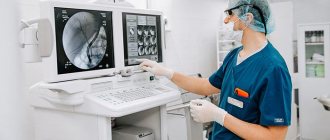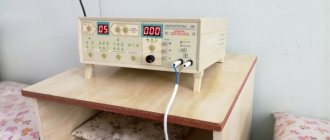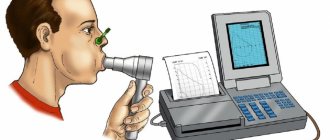Plasmapheresis is one of the most popular types of extracorporeal detoxification, aimed at changing the organic, gas or water-electrolyte composition of the blood substance through its chemical and mechanical treatment outside the body. Special equipment is required to carry out cleaning operations. Both qualitative and quantitative characteristics are subject to changes
Features of the procedure
The essence of the method involves the elimination (removal) of all elements contained in plasma. The most significant therapeutic effect is achieved when harmful substances are concentrated in the liquid component of the bloodstream.
Like any other medical procedure, plasmapheresis requires precise dosing of the amount of circulating plasma volume (CVP) taken. The calculation of the permissible BCP is determined for each patient individually using special tables, taking into account age characteristics, gender, and anthropometric data.
Depending on the amount of plasma removed in one procedure, there are several varieties of this method:
- low-volume plasmapheresis - up to 20%;
- medium volume - 20-50%;
- high-volume - 50-70%;
- plasma exchange (from 70 to 150%);
- massive plasma exchange - over 150% of the total CV.
Plasmapheresis results
If you complete a full course of plasmapheresis in combination with other medications and procedures prescribed by your doctor, you can achieve the following results:
- deep detoxification of the whole body. By “washing blood cells,” the plasma filter cleanses the red blood cell mass of all waste and toxins that have accumulated in it over the years. Such cleansing not only helps to cure diseases, but also improves overall well-being, the condition of the skin and mucous membranes, and normalizes the functioning of the gastrointestinal tract and cardiovascular system;
- immunomodulatory effect. Thanks to interaction with the separating apparatus, immunomodulatory cells become toned and a so-called state of “intense immunity” appears, which means increased resistance to various viruses and pathogenic bacteria;
- stimulation of the hematopoietic and cardiovascular systems. Due to the extraction of old plasma from the blood, the body begins to exist in a controlled water-electrolyte imbalance, however, in cases where such a condition is undesirable, the extracted plasma is replaced with plasma-substituting solutions;
- improving blood quality and fluidity. Blood thickening is a symptom common to many diseases. Excessive blood density can cause oxygen obstruction through small capillaries and, as a result, tissue hypoxia. In this case, plasmapheresis has a thinning effect and also improves the rheological properties of the blood. Liquid blood improves the penetration of nutrients into cells and also helps remove toxic waste from the body.
Plasmapheresis: benefits and harms
The therapeutic effect of plasmapheresis is based on the following molecular mechanisms:
- Quantitative removal of various biomolecules: paraproteins, antibodies, breakdown products, exotoxins, nonspecific endogenous molecules, etc.
- Full or partial replacement of missing components by donors.
- The effect of the plasma filter membrane on the structures of blood cells (deplasmization of red blood cells, reduction in the viscosity of the filtered liquid).
- Acceptable placebo is the effect most expected in the treatment of chronic diseases.
At the same time, the simultaneous removal of more than 30% of the VCP from the body results in a stable, significant decrease in the concentrations of plasma proteins, coagulation factors, and immune antibodies that are useful for the human body. The restoration of these indicators occurs over a long period of time (at least 7 days). When about 50% of the central nervous system is removed in one session, the body has no reserves for self-recovery and ensuring the normal functional state of organs. Such conditions can be corrected by introducing donor components. Removal of more than 100% of the VCP cannot be corrected even by infusions of albumin and donor plasma; such conditions are difficult to tolerate by patients. Therefore, the plasma exchange procedure is carried out only in critical and life-threatening conditions.
What is plasmapheresis?
The name of this method consists of two Greek words: “plasm” - plasma and “apheresis” - removal. In full accordance with the name, the essence of plasmapheresis is that plasma (the liquid part of the blood) is taken from the patient’s blood, filtered, after which the purified blood cells (red blood cells, leukocytes and platelets) are returned back to the body.
Poisons, toxins, bacteria and viruses accumulate in plasma, and therefore it is removed from the body and, if necessary, replaced with special liquids or donor plasma.
But isn't such an impact dangerous? In what cases should it be used? Let's figure it out.
How is blood plasmapheresis done (varieties of techniques)
Gravity methods are based on the fragmentation of blood substance into formed elements and plasma, under the influence of accelerated sedimentation.
This method provides two options for plasmapheresis:
- non-hardware - carried out through the natural deposition of cellular structures;
- centrifugal, when blood separation is achieved by centrifuging a certain volume of it.
Modern clinics perform two types of hardware gravitational plasmapheresis:
- Discrete. Blood is taken from the patient into a special plastic container with a volume of 400-450 ml, followed by centrifugation of the resulting material, after which functional blood cells are diluted in a sterile solution for infusion and returned to the patient.
- Continuously - in-line. This technique involves the use of a special device for plasmapheresis (separator), thanks to which blood is simultaneously taken, separated and returned to the patient of non-removable components.
The most innovative method of plasmapheresis is membrane, carried out through a special membrane having pores with a diameter of 0.2-0.6 microns. This size of the passage hole allows you to retain blood cells and allow plasma to pass through without any problems. This technique is adapted for the removal of pathological gamma globulins and has proven itself well in the treatment of allergies. One of its varieties is cascade purification, which involves passing blood substance through two membrane filters.
Plasmapheresis in clinical practice
Anesthesiologist-resuscitator of the Department of Anesthesiology and Resuscitation No. 1 Kopytsky A.Yu.
Introduction to the problem, basic concepts and definitions.
Extracorporeal detoxification (efferent therapy) is a targeted quantitative and qualitative change in the cellular, protein, water-electrolyte, enzyme, and gas composition of the blood by treating the blood outside the body.
The ancestor of all methods of blood purification is bloodletting, which has been used since ancient times. The first written mention of bloodletting dates back to the second millennium BC and is associated with the son of Aesculapius - Podalir. The method was widely used until the 19th century, when most doctors abandoned bloodletting. At the beginning of the twentieth century, blood groups were studied, which made it possible to compensate for blood loss with donor blood during bloodletting. Bloodletting followed by blood transfusion was used to save those poisoned by carbon monoxide and for extensive burns. In 1915, the first works on the use of plasmapheresis appeared, but the lack of proper technical equipment for a long time did not allow plasmapheresis to be appreciated.
Only with the rapid development of medicine in the second half of the twentieth century, extracorporeal detoxification methods became a really effective tool in the hands of a doctor, allowing, on the one hand, to help patients overcome a number of diseases, and on the other hand, to minimize the possible harmful consequences and complications of the technique itself. Relevant theoretical knowledge has been accumulated about pathological conditions in many diseases, when substances accumulate in the internal environment of the body that the body is not able to remove on its own - these are various toxic compounds that are either the cause or a supporting factor of the disease, which can only be removed by physico-chemical methods . A prerequisite for this is to take large volumes of blood from the patient, carry out certain manipulations with this blood (depending on the detoxification method) and, finally, return the purified blood to the patient.
The most common detoxification methods today are:
- apheresis - removal of a certain volume of whole blood (most often used when collecting blood from donors, in medical practice - practically not used).
— plasmapheesis – removal of the liquid part of the blood (plasma) that does not contain cellular elements.
- cytopheresis - removal of certain blood cells (erythrocytopheresis - removal of red blood cells, thrombocytopheresis - removal of platelets, etc.)
— hemodialysis is a detoxification method in which mainly small and medium molecules are removed from the blood using special filters. The mechanism of blood purification in this case is diffusion exchange and filtration transfer through the filter membrane between the patient’s blood containing the corresponding toxic molecules and, located on the other side of the membrane, a special sterile solution (dialysate). In this case, the patient’s blood is cleaned only of substances that can pass through the filter membrane. The method is most widespread in the treatment of chronic renal failure, when the main problem is the accumulation of low molecular weight endotoxins.
— hemfiltration is a detoxification method in which toxic products are removed from whole blood along with water by passing the blood through a special filter. The filtered volume is removed, and the remaining patient’s blood is diluted with a special sterile solution (substitute) to the required volume (approximately equal to the volume of blood taken) and returned to the patient.
— hemosorption is a group of methods based on the ability of toxic substances to bind to specific substances to varying degrees. The patient's blood is passed through a column containing a sorbent - and the output is purified blood. The classic method - hemosorption with activated carbon - the method, unfortunately, is non-specific (mainly fat-soluble molecules are removed), and at the same time many substances useful to the body are also removed. More modern methods are sorption with carbon coated with a specific binding substance, for example, with antibodies to toxins, while these toxins are removed first and, accordingly, in larger quantities than with conventional activated carbon.
- and at the end of the section - a whole group of methods based on modification (neutralization) of the toxin in the blood, without its direct removal. This includes various methods of photomodification of blood (ultraviolet, laser) and electrochemical modification of blood (indirect electrochemical oxidation of blood). Unfortunately, this group of methods has very limited capabilities and requires further development and research.
This article will discuss plasmapheresis and its place in the clinic, taking into account modern concepts.
The mechanism of action of plasmapheresis.
Currently, therapeutic plasmapheresis (there is also donor plasmapheresis) and its variations are the most common detoxification operations used in the clinic.
As follows from the definition, plasmapheresis eliminates everything contained in the patient’s plasma. Thus, the greatest therapeutic effect can be obtained when the substances needed to be removed are mainly concentrated in the blood plasma. Like any therapeutic effect, plasmapheresis must be adequately dosed; the dose unit in this case is the proportion of the removed part of the circulating plasma volume (CPV). GCP is calculated individually for each patient using appropriate formulas or tables, mainly depending on gender, age and body weight.
Depending on the volume of plasma removed, this method may be called:
- plasmapheresis - when removing up to 70% of the central nervous system (low-volume - up to 20% of the central nervous system, medium-volume - 20-50% of the central nervous system, high-volume - 50-70% of the central nervous system);
- plasma exchange - if 70-150% of the CP is removed;
- massive plasma exchange - with an exchange of more than 150% of the central value.
Mathematically, it can be calculated that with a volume of plasma exfusion of 50% of the OCP, 40% is removed, with a volume of plasma exfusion of 1 OCP - 64%, with an exfusion volume of 1.5 OCP - 78% of the substances present in the plasma before surgery. Increasing the volume of plasma exfusion gives a smaller and smaller increase in the effectiveness of the method. At the same time, the one-step removal of more than 30% of the VCP already results in a significant reduction in the concentration of useful, vitally important biomolecules for the body - namely plasma proteins, antibodies and blood clotting factors, which is clearly manifested in the analysis of laboratory parameters before and after the procedure and requires a long recovery (before weeks). With the immediate removal of 50% of the VCP, the body is no longer able to independently compensate for the deficiency of vital proteins, therefore, starting from this dose, it is mandatory to introduce donor blood components - only albumin, or albumin and donor plasma. When 100% or more are removed, the volumes of donor blood components (albumin and plasma) are already so significant that the plasma exchange operation itself can lead to a number of complications and is very difficult for patients to tolerate. Therefore, plasma exchange (100% VCP or more) is prescribed according to strict indications, only in the presence of a life-threatening condition.
The most studied molecular mechanisms of the therapeutic effect of plasmapheresis are:
1) Direct removal of the following biomolecules:
a) paraproteins (defective proteins produced in a number of malignant blood diseases - myeloma, Waldenström's macroglobulinemia, etc.).
b) antibodies to the body’s own tissues and circulating immune complexes. In addition to the direct removal of autoantibodies and CEC, a positive effect on the immune system is manifested in a secondary reduction in the load on the cells of the immune system with subsequent normalization of the ratio of subpopulations of T- and B-lymphocytes and granulocytes, which can significantly slow down, and in some cases completely stop the autoimmune process in the patient's body.
c) breakdown products of the body’s own tissues (proteoliposomes in acute pancreatitis, myoglobin – in massive breakdown of muscle tissue, fibrin degradation products in DIC syndrome).
d) nonspecific endogenous molecules that enhance tissue damage - acute phase proteins, cytokines, inflammatory mediators.
e) exotoxins bound to plasma proteins (toadstool toxins, botulinum toxin, some drugs).
f) products of impaired metabolism (lipoproteins in hereditary or acquired dyslipidemia).
2) Compensation of deficient factors with replacement blood components.
3) Less significant or studied mechanisms - interaction with foreign surfaces of the plasma filter circuit and membrane (with a positive effect for the body), deplasmization of red blood cells (at the stage of dividing the patient’s blood into plasma and cells, the concentration of red blood cells can reach up to 70-80% - with a positive effect noted effect on the functional state of red blood cells), rheocorrection (reducing blood viscosity); and finally, the placebo effect can also be useful, especially in chronic diseases.
Methods of performing plasmapheresis:
Gravity methods cellular elements through accelerated sedimentation of the latter.
Options: manual (non-hardware) - carried out by natural deposition of cellular elements; hardware - blood separation is achieved by rapid rotation of a certain volume. In this case, the components of the blood are located in relation to the center of rotation in accordance with their density: red blood cells are the furthest away, blood plasma is the closest, between the red blood cells and blood plasma there are platelets, lymphocytes and granulocytes. There are two methods of gravitational hardware apheresis: discrete and continuous flow .
With discrete gravity plasmapheresis : the patient's blood is drawn by gravity into a sterile plastic container in a volume of 400-450 ml and centrifuged; after separation into components, the plasma is removed, and the red blood cells are diluted with sterile infusion solutions and returned to the patient. The cycle is repeated the required number of times until the required volume of CCP removal is achieved.
Continuous-flow plasmapheresis : blood collection, separation, and return of non-removable blood components to the patient occur simultaneously. This method is implemented on modern high-performance devices (blood separators). Blood separation occurs in a flat, rectangular chamber in the shape of a broken ring, rotating while the separator is operating. Whole blood enters the chamber from one end and, with continuous flow, is divided into specified components, which are removed from the other, opposite end of the chamber.
Membrane plasmapheresis is carried out through a semi-permeable membrane with a pore diameter of 0.2-0.6 microns. Pores of this diameter allow plasma to pass through, but retain all the formed elements of blood. The molecular weight of substances passing through this membrane reaches 3 million D. The weight of molecules of circulating immune complexes with IgG is about 1 million D - this method is well suited for the removal of pathological gamma globulins and CEC in autoimmune diseases; and is not suitable for use in acute pancreatitis, where the molecular weight of the main factor in pathogenesis - proteoliposomes - significantly exceeds the indicated figure of 3 million.
Indications and contraindications for plasmapheresis.
It is necessary to distinguish 2 groups of diseases for which treatment with plasmapheresis is indicated.
1. Diseases for which they are the main type of treatment. The high effectiveness of treating these diseases using plasmapheresis has been proven in prospective, randomized multicenter studies. Almost all of these types of pathology are included in the list approved by the American Society of Apheresis and have remained virtually unchanged for the last 10-15 years.
Here is a list of them:
- erythromyelosis;
- leukocytosis and thrombocytosis in hemoblastoses;
- post-transfusion purpura;
- sickle cell anemia;
- porphyria;
- primary hemochromatosis;
- hereditary hypercholesterolemia;
- poisoning with poisons that bind predominantly to blood plasma proteins (toadstool, organophosphorus insecticides);
- Guillain-Barre syndrome;
- chronic polyneuropathy;
- myasthenia gravis;
- cryoglobulinemia;
- Goodpasture's syndrome;
- thrombotic thrombocytopenic purpura;
- hemolytic-uremic syndrome;
- blood hyperviscosity syndrome in myeloma;
- DIC syndrome;
- massive intravascular hemolysis;
- myoglobinemia.
2. Diseases for which plasmapheresis procedures are included in therapy upon the appearance or development of certain conditions or indications:
- rheumatoid arthritis;
- systemic lupus erythematosus;
- systemic vasculitis;
- rapidly progressive glomerulonephritis;
- psoriasis;
- blistering dermatoses;
- severe forms of allergic and pseudoallergic reactions;
- bronchial asthma;
- multiple sclerosis;
- acute pancreatitis;
- severe sepsis.
Contraindications to plasmapheresis are conventionally divided into absolute and relative. However, even in the presence of absolute contraindications, in a situation where this method is considered life-saving, we first carry out measures to stabilize the patient’s condition, and then, in compliance with the safety conditions of the operation, with careful monitoring and prevention of complications, we perform the necessary plasmapheresis operation (most often - this is high-volume plasmapheresis or plasma exchange).
Absolute contraindications:
- General severe, uncompensated condition of the patient (including terminal condition).
- The presence of a source of surgical bleeding or the presence of potential sources of bleeding (ulcers, erosions, tumors of the gastrointestinal tract, lungs, varicose veins of the esophagus).
- Allergic reactions to components of the procedure.
Relative contraindications:
- Acute stage of infectious and purulent-inflammatory processes (abscess, phlebitis).
- Congenital or acquired disorders of hemostasis, thrombocytopenia (except DIC syndrome).
- Hyperthermia of unknown origin, not related to the underlying disease.
- Anemia.
- Hypoproteinemia.
- Lack of venous access.
- Menstruation period in women.
- Pregnancy.
Special cases of using plasmapheresis in our practice.
In our multidisciplinary hospital, more than 30,000 people are treated during the year, up to 5% of the total flow of patients pass through the intensive care unit, and, accordingly, a fairly large number of patients require extracorporeal detoxification methods. For more than ten years, we have been using hardware continuous-flow plasmapheresis technologies with good and excellent results. The range of pathologies for which we used this technique is very diverse, while the greatest experience has been accumulated in the treatment of the following nosologies:
- acute destructive pancreatitis.
— autoimmune lesions of the central nervous system (multiple sclerosis, acute inflammatory demyelinating polyneuropathy, disseminated encephalomyelitis, Guillain-Barré syndrome).
- myasthenia gravis.
— severe sepsis with multiple organ failure (single observations).
Our tactics for acute pancreatitis : high-volume (50-70% CV) plasmapheresis is performed - only 2-3 sessions. The most effective technique is when carried out within the first 5 days from the onset of pain. In this case, it is necessary to use albumin and FFP as replacement solutions (FFP - if possible, use in a minimal amount only to replace lost blood coagulation factors - strictly under the control of laboratory parameters of the hemostasis system).
Of all severe acute pancreatitis, we see the greatest clinical effect when performing plasmapheresis for hemorrhagic pancreatic necrosis and pancreatic necrosis with chylosis. In case of hemorrhagic pancreatic necrosis, we perform high-volume plasmapheresis for detoxification purposes in terms of removing the factors of the pathogenesis of pancreatitis (proteoliposomes, cytokines, kinins, TNF and other inflammatory factors) and for the treatment of disseminated intravascular coagulation syndrome, which is always present in this variant of pancreatitis. In terms of replacement of removed plasma - replacement of FFP up to 100% of the removed plasma, albumin 5% - up to 600 ml; after the procedure, transfusion of cryoprecipitate (or fibrinogen preparations, if available) and platelet concentrate is often required.
Acute pancreatitis with chylosis is more benign, while the early organ disorders that we see in the acute period are largely due to hyperviscosity syndrome due to hemoconcentration and a large number of circulating proteoliposomes. With significant chyle, it is possible that it is initially impossible to determine the blood group according to the ABO system and (or) the Rh factor. In such a situation, introductory plasmapheresis is carried out in a volume of up to 30% of the total volume with replacement with crystalloid, colloid solutions and albumin solution. After correction of chyle, after receiving the results of determining the patient’s blood type, further sessions are carried out according to general rules.
Autoimmune lesions of the central nervous system : depending on the severity of the course (acute or subacute/chronic), the severity and dynamics of the increase in neurological symptoms, two options for managing the patient are possible: plasma exchange up to 200-250% (in total) in two or three sessions over a week - in severe cases acute course of the disease; and performing serial medium-volume plasmapheresis with replacement of 100-120% of the total volume of blood volume (total) for 7-10 days. In the first case, replacement is carried out with albumin preparations, FFP, crystalloids - to maintain normal hemostasiogram parameters (including fibrinogen of at least 2 g/l) and a total protein level of at least 50 g/l. In the case of serial medium-volume plasmapheresis with initially normal parameters of the blood coagulation system, replacement without the use of FFP - with solutions of albumin, crystalloids and synthetic colloids - is sufficient.
Myasthenia gravis : plasma exchange according to the scheme indicated above - up to 200-250% of the central nervous system in two or three sessions is required in the event of a myasthenic crisis, ineffective spontaneous breathing and the need for mechanical ventilation. Most often, patients experience a cholinergic crisis associated with an overdose of anticholinesterase drugs (ACP) - in this situation, ACP therapy is canceled for the duration of plasma exchange. Upon completion of extracorporeal hemocorrection (usually 3-4 days or less), the maintenance dose of ACP is again selected. In all the cases we observed with this approach in the intensive care of myasthenic crisis, we were able to transfer the patients to spontaneous breathing; subsequently, after stabilization of the condition, the patients were discharged, and the doses of ACP at discharge were significantly less than at admission. In the chronic course of myasthenia gravis, it is also possible to perform a course of serial medium-volume plasmapheresis with the replacement of 100-120% of the CP for 7-10 days, which also helps to reduce the dose of ACP taken, improve the general condition of patients, and increase physical activity.
Severe sepsis with multiple organ failure. According to the literature, the use of high-volume plasmapheresis is pathogenetically justified in severe sepsis, since the removed plasma removes not only toxins of the pathogen that caused sepsis (endotoxins, exotoxins, toxin enzymes), but also incompetent components of the immune system, immune complexes, cytokines, opsonins, autoantibodies, etc.. In addition, plasmapheresis allows you to stop the manifestations of DIC syndrome, which is often one of the complications of severe sepsis. And finally, according to available data, when sepsis is combined with acute kidney injury, the use of plasmapheresis as part of complex therapy also contributes to a more rapid recovery of kidney function. In our practice, there are several observations when we used high-volume plasmapheresis with replacement of 50-70% of the total blood volume per session - only 2-3 sessions - in complex therapy of severe sepsis with multiple organ failure. At the same time, we obtained good results: clinically, stabilization of the patient’s general condition, stabilization of hemodynamics, improvement of renal function, and relief of disseminated intravascular coagulation syndrome were observed.
Conclusion.
In conclusion, I would like to quote the authors of the recommendations: “Guidelines for conducting plasma replacement during therapeutic plasmapheresis,” developed in the Hematological Scientific.
Contraindications
There are relative and absolute contraindications to blood purification using plasmapheresis.
These include:
- critical and uncompensated conditions of the patient;
- surgical bleeding and potential sources of uncontrolled bleeding (erosions, tumors, ulcers);
- individual intolerance or a history of allergic reactions to one of the components of the procedure;
- infectious and purulent processes in the acute stage;
- hyperthermia of unknown origin;
- primary or secondary pathological disorders of hemostasis;
- anemia of various etiologies;
- hypoproteinemia;
- inability to provide peripheral or central venous access;
- period of pregnancy, menstrual bleeding in women.
3. Diseases for which plasmapheresis is an effective method
The main groups of diseases for which blood purification is effective:
- endocrine diseases (including diabetes mellitus);
- metabolic disorders of any origin;
- gastrointestinal diseases;
- infectious diseases of the kidneys and genitourinary system;
- autoimmune diseases and conditions associated with other disorders;
- allergies;
- lipid metabolism disorders, diseases of the vascular system;
- acute poisoning and chronic intoxication;
- skin diseases;
- urogenital infections;
- toxicosis and infections of pregnant women, Rh conflicts;
- somatic consequences of burns, radiation sickness, chemotherapy, heavy antibacterial therapy, alcoholism and drug addiction.
Side effects
Despite the undeniable benefits of plasmapheresis, the following conditions can sometimes be observed during the procedure or immediately after its completion:
- embolic lesions of small and large vessels;
- acute hypovolemia, manifested by a sharp decrease in blood pressure;
- acute hypervolemia, characterized by acute left ventricular failure (shortness of breath, respiratory failure, pulmonary edema);
- hemorrhagic syndrome;
- allergic reactions of varying intensity, up to anaphylactic shock;
- pyrogenic reactions;
- hypocalcemia (numbness of the limbs, tongue, lips).
At the same time, the frequency of complications during planned procedures, after all preparatory and diagnostic measures, is reduced to a minimum.
Need some advice?
OR CALL A DOCTOR
CALL!
+7
Who is plasmapheresis contraindicated for?
Like every serious medical procedure, plasmapheresis has a number of contraindications:
- any bleeding (including menstrual bleeding);
- intestinal and stomach ulcers;
- irreversible changes in the heart and brain;
- severe hypotension (low blood pressure);
- anemia;
- poor blood clotting;
- some liver diseases;
- severe swelling;
- infectious diseases in the acute phase;
- acute hepatitis;
- malignant tumors.
Plasmapheresis can only be prescribed by a doctor and occurs under his full control. The specialist will conduct a diagnosis, draw conclusions about the benefits of plasmapheresis in a particular case, identify contraindications and prescribe a course of the required number of procedures.
How is preparation for this procedure carried out?
Plasmapheresis is very widely advertised. Some private clinics promise miracles with this procedure, which gives rise to a somewhat frivolous attitude towards the process itself. Meanwhile, the consequences of such a careless attitude towards health can be extremely negative. Therefore, it is worth preparing properly for plasmapheresis.
Necessary:
- Refuse to drink alcoholic beverages for a week (if possible). Purifying the blood after a binge is an exception, but in such a case the narcologist must make the admission under his own responsibility.
- Stop drinking tea and coffee one day before.
- Do not smoke for at least 2 hours before the procedure and for 2 hours after.
- Limit the consumption of flour, fatty, fried, sweet foods.
- Establish a special drinking regimen. In particular. If the patient does not have special contraindications, then he needs to drink approximately 2 liters of water during the day before starting the procedure.
Important: the patient must inform the doctor about what medications he is currently taking. Also, if the patient feels unwell the day before the procedure, he needs to let the doctors know about it.
When are narcologists referred for plasmapheresis?
Our clinic also provides such a service as plasmapheresis. It allows you to achieve a number of positive therapeutic effects:
- Very quickly rid the body of toxins. In this regard, nothing compares to this procedure. The process itself takes from 2 to 4 hours. The effect begins to be observed literally on the same day, that is, the patient becomes noticeably better.
- Reduce the load on vital organs. This is especially important in relation to the liver and kidneys. If toxins are not removed from the blood artificially, they will be eliminated naturally, that is, by the indicated organs. And this means a serious load, as a result of which liver or kidney failure may occur.
- Make medical procedures possible for others. For example, very often people who are on a binge or suffer from its consequences require prompt medical assistance. However, they cannot receive it fully, since it is simply impossible to use different medications until all substances are removed from the body.
As a standard, narcologists offer this procedure when the toxic damage to the body becomes very serious. They believe that the procedure should be carried out only if there are real indications. Frequent examples:
- The binge lasts for several weeks, and they did not immediately turn to narcologists.
- Drinking alcoholic beverages included drinking high-strength alcohol, which increased the load on the body.
- Alcohol poisoning began to be combined with drug addiction or with poisoning for other reasons (for example, a person suffers from substance abuse or simply has food poisoning). In the latter case, multiple problems arise, possibly multiple organ damage. And in this case, turning to plasmapheresis allows medicine to save a person’s life.
- A person cannot break out of binge drinking on his own; the usual placement of a drip will not help.
- The person has coped with the binge, but suffers greatly from its consequences. In this case, the situation also turns out to be controversial. Sometimes it makes sense to perform plasmapheresis.
Diet and daily routine after plasmapheresis
Immediately after the procedure, the patient remains under the supervision of a doctor for several hours. To avoid the development of side symptoms, the patient is not recommended to engage in sports, heavy physical labor, go to the sauna, bathhouse, take hot baths or eat hot food on this day. All these actions can cause vasodilation, headaches and dizziness. Is it possible to eat before plasmapheresis? Yes, you can, but you should adhere to a certain diet both before and after the procedure:
- You should not eat fatty, fried, spicy or sweet foods the day before plasmapheresis and the whole day after it;
- Before the procedure, you should not smoke or drink alcoholic beverages, as this can affect the composition of the blood;
- before and after plasmapheresis, you should adhere to a diet rich in protein products: you should include in your diet porridge, rabbit meat, chicken (breast), eggs, soybeans and soy products, seaweed, legumes, bran, cottage cheese and hard cheese, as well as nuts and seeds and fish rich in iron and omega-3;
- Avoid drinking alcohol for several days after plasmapheresis. You should not overdo it with alcoholic beverages; you can start with a glass of dry red wine, as it contains a large amount of beneficial microelements and has a beneficial effect on the functioning of the heart muscle.
Timely, competent treatment will help you recover in a short time, and also prevent the development of the disease at more severe stages. Plasmapheresis is an excellent method of blood purification, which involves not only the elimination of symptoms, but also a general improvement in the patient’s health.
Plasmapheresis in Moscow is carried out in an oncology clinic under the careful supervision of professional transfusiologists of the highest qualifications. To schedule a consultation, call the Yusupov Hospital.
What are the contraindications to plasmapheresis?
It is worth noting that in some cases this procedure is contraindicated. We are talking about the following:
- Severe disturbances in the functioning of the lungs or heart.
- Pathologies of the liver, as a result of which this organ has stopped producing protein.
- Serious blood loss or disorders that lead to problems with blood clotting.
- Serious kidney pathologies.
- Significant depletion of the body.
- Significant blood loss before the procedure.
- Oncological diseases, with the exception of such cases when plasmapheresis is included in therapy, and the procedures are specifically prescribed by the doctors caring for the patient.
What device is used at the National Center of Surgery and its advantages?
At the National Center of Surgery, plasmapheresis is carried out using the latest Fresenius Kabi device - Fenwal Amicus Separator. The device is distinguished by an intelligent control system, which simplifies the procedure and increases its efficiency.
The shape and technical design of the device is much more comfortable for the donor (low noise level, single- and double-needle approach). The procedure time is reduced (less than 1 hour), has individual control of the anticoagulant supply. After entering the donor's data, the device itself will determine the maximum rate of blood return and the required dose of anticoagulant. This is especially important for patients with hypersensitivity to citrate (an anticoagulant).
Safety is determined by disposable consumables, which are sterilized by a special irradiation method. An intelligent control system allows you to manage the entire procedure. In case of violation of the procedure or any inaccuracies, the device gives a signal and relevant information that allows us to take immediate action.
The design and construction of the device fully complies with the most stringent international standards.
Indications for use
Discrete (centrifugal) plasmapheresis is used to detoxify the patient's body. It is used to reduce the concentration in the blood of autoimmune complexes, pathological antigens and antibodies, toxic metabolic products, hormones, inflammatory mediators, to reduce poisons and toxins. Thus, with the help of discrete plasmapheresis, homeostasis is normalized and immunity is corrected.
There are many indications for discrete plasmapheresis. Among them are rheumatological diseases:
- periarteritis nodosa;
- gout;
- rheumatoid arthritis;
- systemic lupus erythematosus;
- dermatomyositis;
- scleroderma;
- thromboangiitis obliterans;
- systemic vasculitis.
Plasmapheresis for these diseases cleanses the blood of circulating immune complexes, rheumatoid factor, seromucoid, inflammatory mediators, autoantibodies, fibrinogen.
Allergies and allergic diseases (bronchial asthma, Quincke's edema, acute urticaria, hay fever) will also be an indication for plasmapheresis. The procedure removes immunoglobulins E and antigens from the plasma that cause a hyperreaction.
It is worth considering going for manipulation when the patient is concerned about dermatological diseases (psoriasis, neurodermatitis, eczema, atopic dermatitis, furunculosis), neurological pathologies (multiple sclerosis, polyneuropathy, chronic fatigue syndrome, myasthenia gravis), as well as intoxication and poisoning (alcohol, narcotic substances) , poisons).
Plasmapheresis is indispensable for liver diseases, diseases of the cardiovascular system, blood and pathologies of the urinary and male reproductive systems.
Discrete plasmapheresis is used in obstetrics and gynecology for certain diseases and pathological conditions (ureaplasmosis, cytomegalovirus infection, Rh conflict, gestosis and nephropathy in pregnant women, miscarriage, infertility, menopause, inflammation of the appendages).
Why is this procedure not always done?
It is worth considering that plasmapheresis has significant side effects and contraindications. For example, as a result of such a procedure there is a risk of developing arterial hypotension. There is, albeit a small probability, the formation of thromboembolism. And finally, some patients experience increased bleeding.
Do not forget that such blood cleansing is a serious burden for the entire body, stress. The increased load is on the heart, liver, kidneys, and circulatory system. It is especially difficult for patients who react negatively to sudden changes in pressure in the body.
Taking this into account, it is not difficult to understand why such a procedure is not performed as an analogue of a cosmetic one. It is also not a normal part of withdrawal from binge drinking. Narcologists usually put on IV drips to help you stop drinking. They also help cleanse the blood, but at the expense of activating processes that occur inside the body. That is, plasmapheresis is a completely different matter.
Therefore, you cannot contact our clinic and simply order this procedure. The same applies to any other clinic. Plasmapheresis is carried out strictly according to the doctor’s indications, when the specialist assesses the patient’s condition, takes into account the pros and cons, and all the risks. That is, he sees the big picture in front of him.
It is also worth noting that acute drug or alcohol intoxication is a relative indication for plasmapheresis, as opposed to absolute. This means that the doctor, based on the data he receives and the overall picture that he sees in front of him, can make a different decision. For example, use alternative methods of providing assistance.
Classification of cleansing event
The following types of plasmapheresis exist:
- Discrete (aka centrifugal). Involves plasma purification by centrifugation. It makes it possible to reduce the content of antibodies, immune complexes, toxins, hormones, antigens, proteins and even lipids in biological fluid. Its disadvantages include the lack of selectivity and the need to replace removed components with special medical solutions or donor material. Blood is taken from a peripheral vein. Then it is transferred to a centrifuge and separated into plasma and red blood cells. The latter is reintroduced together with the plasma-substituting composition. The plasma is disposed of.
- Membrane. A method of purifying blood outside the patient’s body, which is carried out in an automatic, continuous mode. Not all plasma taken from the patient is removed, but only the toxic components contained in it. The utilized plasma volume is replaced with special medications. During this treatment, not one, but two catheters are inserted. According to the first, blood is taken, and according to the second, it is returned immediately after purification.
- Cascade. This type of plasma filtration is similar to membrane filtration, but involves the use of two filters. With its help, you can qualitatively remove fibrinogen, lipoproteins, triglycerides, viruses, pathological immune complexes, and immunoglobulins.
The doctor decides which type of plasmapheresis is indicated for a particular patient. In this case, the characteristics of the clinical situation and the person’s health status must be taken into account.








